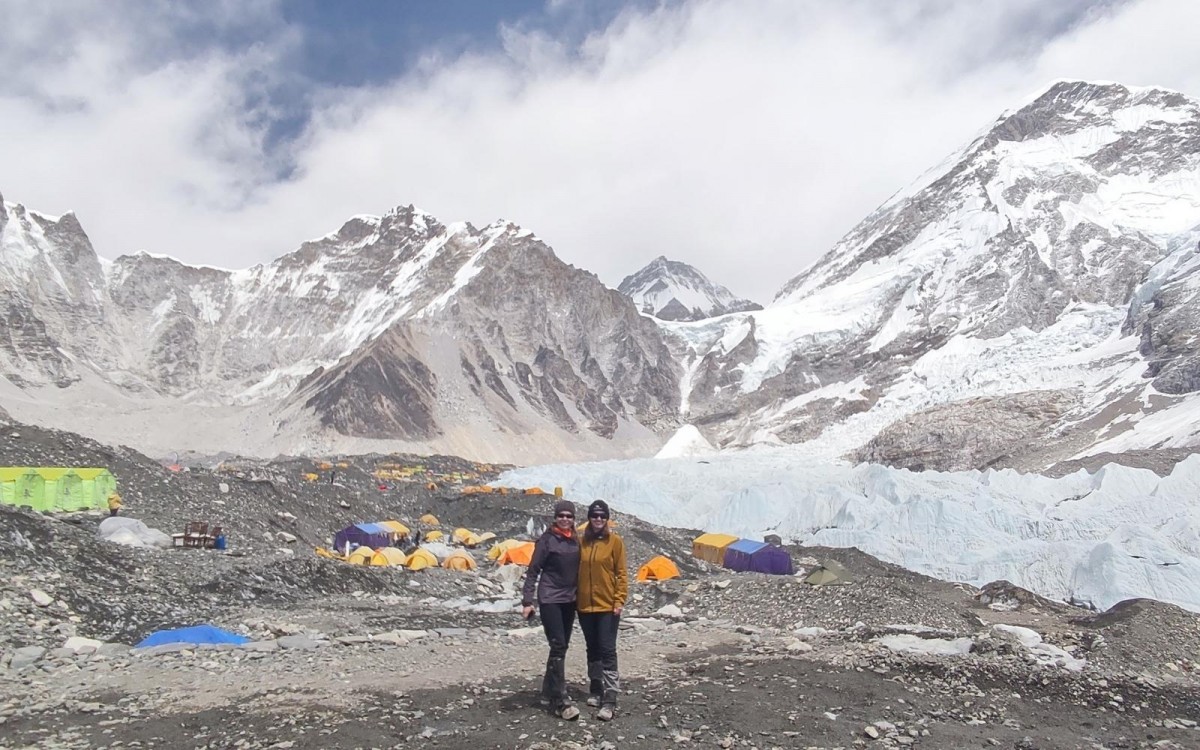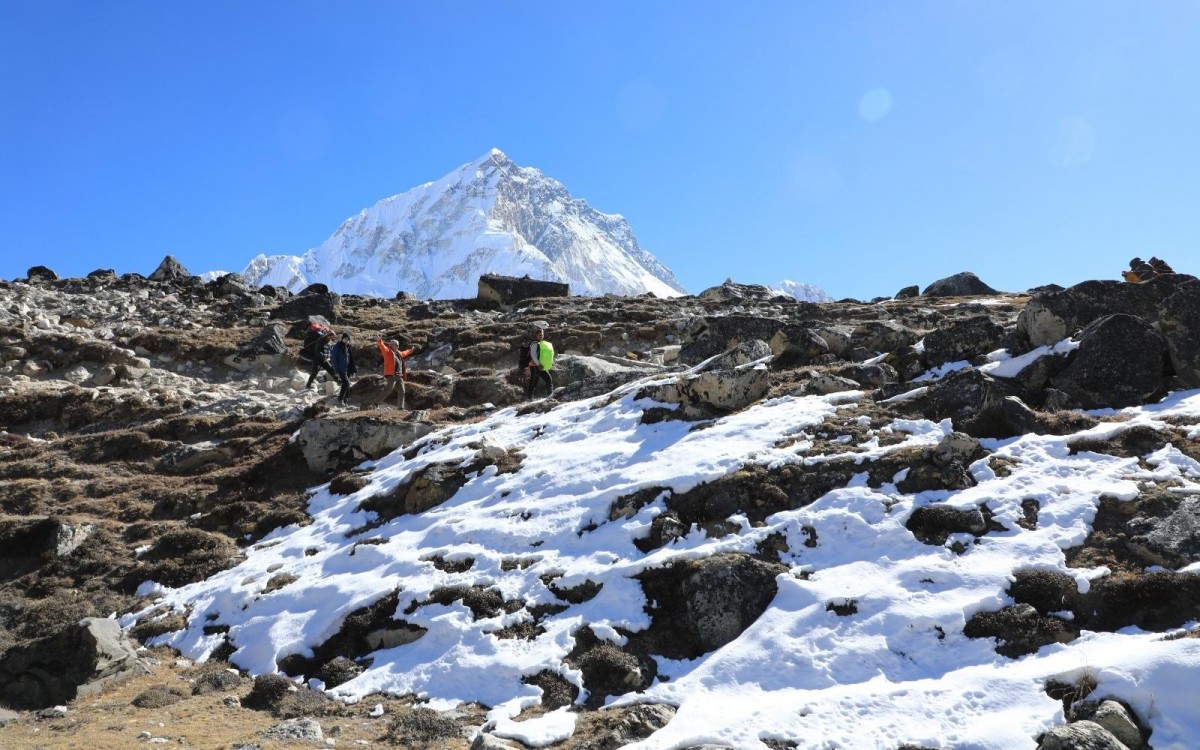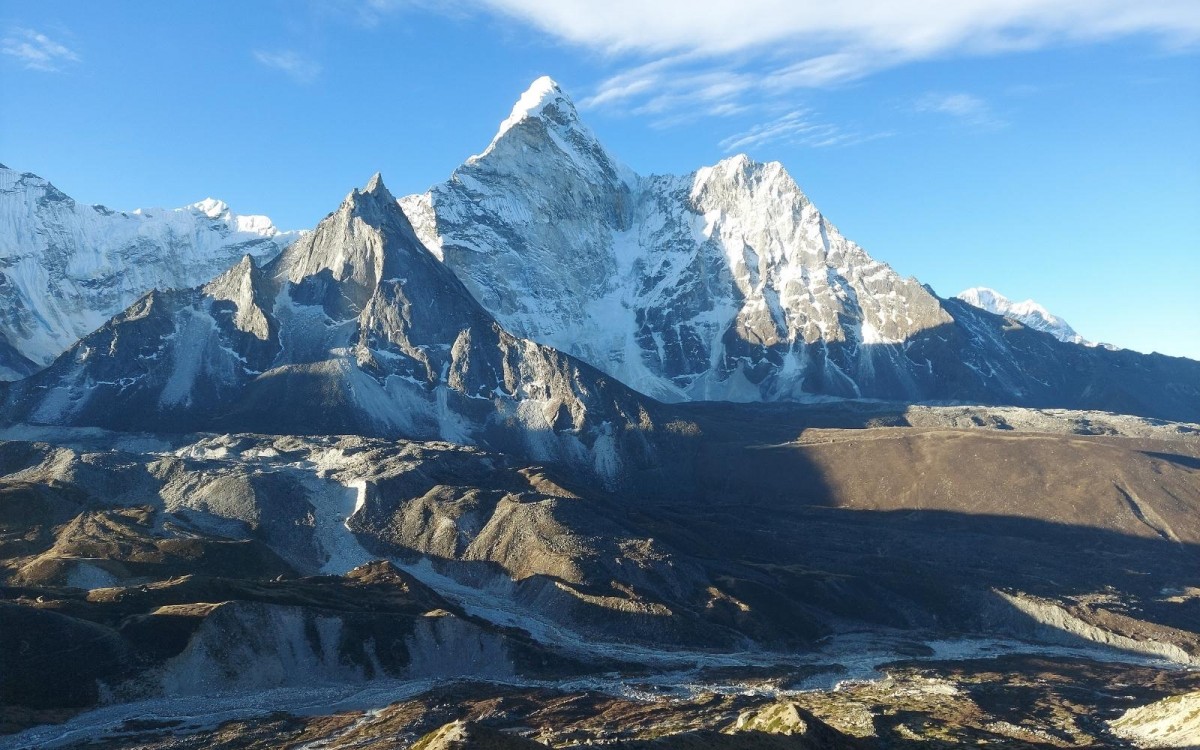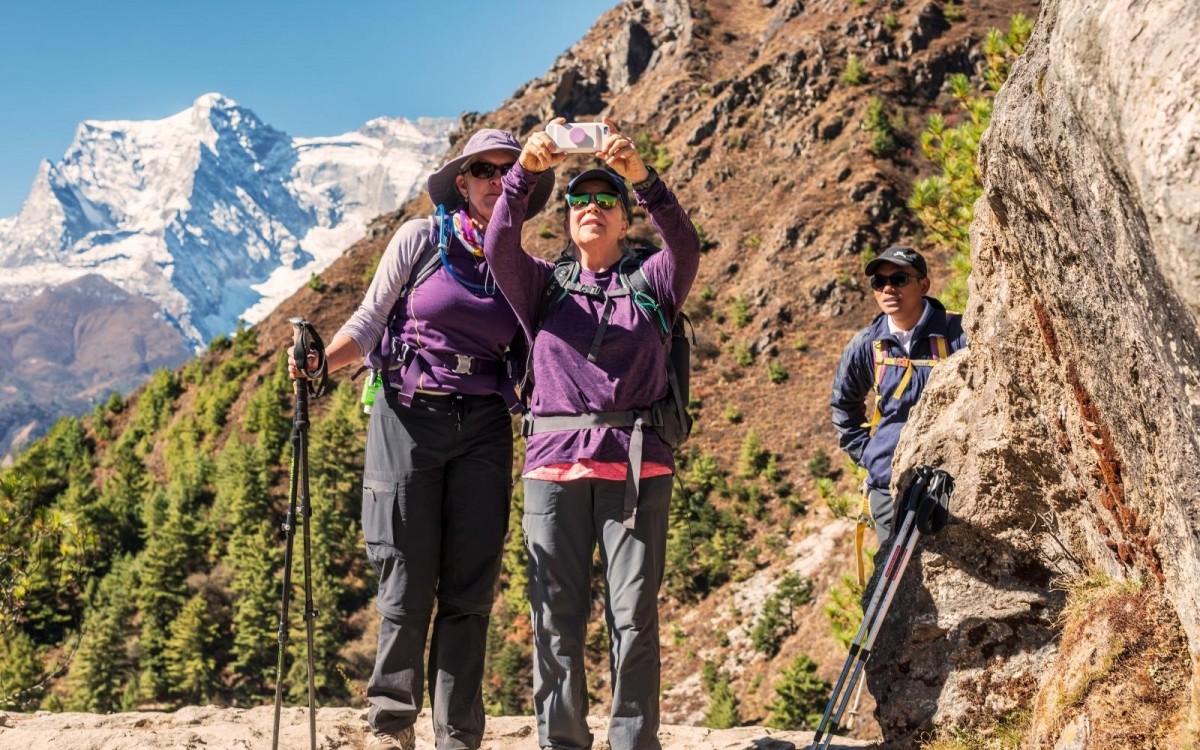
The Everest Base Camp is located in the Everest region at approximately 5364 meters above sea level. It is the starting point for most climbers who have dreamt of conquering Mount Everest. The camp lies inside the territory of Sagarmatha National Park. The Everest Base Camp Trek is not a walk in the park, and thousands of tourists attempt the journey every year. The mountain range offers a picturesque view of the Himalayas besides other features like Lhotse, Nuptse, and Ama Dablam, among others. This means that the trek to EBC can also be enlightening in the cultural aspects of the Sherpas’ life. They have gained a reputation for being inexhaustible and adaptable to the conditions of the high-altitude region.
Everest Base Camp is showcased as a significant part of the story of Mount Everest and its history of climbing. It is one of the oldest camping sites, established when the explorers started exploring the mountain in the 1920s and 1930s by the British. It only received recognition when it contributed to the successful expedition to ascend Mount Everest in 1953 by Sir Edmund Hillary of New Zealand and Tenzing Norgay Sherpa of Nepal. They are also able to unlock the new strategic location of the now commonly famed Everest Base Camp for further enhanced worldwide interest in climbing and other extreme treks. The camp has somewhat evolved from being literally just a shelter of rocks and ice walls into a big campsite with tents and other facilities.

Some things to focus on while you’re at EBC
Everest Base Camp is located at an altitude of 5364 meters in the southern part of Nepal. This is a point for those wishing to reach the top of the highest mountain in the world. To reach the base of Everest, you’ll have to first land at one of the highest-altitude airports in the world. Lukla Airport.
One of the best attractions of this journey is trip through Namche Bazsar. You’ll see examples of modernization mixed with tradition. There are comfortable lodges, restaurants, bakeries and all the amenities you can hope for.
Another attraction in this region is Everest View Hotel, one of the highest-placed hotels in the world. Catch panoramic glimpse of mountain range as far as your eyes can see. Marvel at snow-capped peaks from the hotel’s viewpoint.
On your way to EBC, see the mighty Khumbu Glaciers, which is about 180 square kilometers in area and was formed approximately 500000 years ago. You can view mesmerizing sunrise from Kala Patthar, another major attraction in this Everest Base Camp Trek.
You can visit the spiritual Tengboche Monastery, one of largest Monastery in the region. Feel positive and religious vibes as you step into the monastery. Witness monks praying. Get lost in their chants and hymns.
The Everest Base Camp trek is well known for its difficulties. Aside from natural beauty, it takes trekkers through forests, rocky terrains, and glacial moraine. This adds to the opportunity to see a variety of wildlife and plants. Finally, on arriving at Base Camp, climbers are enthralled with views of Khumbu Ice fall and mountain peaks. They feel inner satisfaction upon completing this journey.
This journey is strenuous yet possible for many physically fit and prepared adventurers. The EBC Trek is a once-in-a-lifetime trip into the heart of the Himalayas.

Preparation Guide
- Physical Fitness and training:
Work out by running biking, swimming or hitting gym. Pay extra attention to your legs, middle and back with moves like squats steps and lifting weights. You could also hike nearby trails, which will help get better at walking far. - Travel documents and permits: Ensure your travel papers are in order. Your passport should still be good for six months after you plan to stay in Nepal. Get your TIMS card and Sagarmatha National Park permit before you arrive.
- Health and Safety: Get your shots and check which ones you need for Nepal. Also, pack any meds you take often. It’s smart to have travel insurance which covers emergency help rescue from high places and hospital bills.
- Route and Itinerary planning: Learn the usual path to EBC through Lukla Phakding, Namche Tengboche, Dingboche Gorak Shep, and Kala Patthar. If you’re looking for something different consider the Gokyo Lake trek.
- Nutrition and hydration: For your trip take snacks that give you lot of energy. Like nuts, snack bars and dry fruits. Drink lots of water. Buy water or fill up at a spring. Clean it with pill or filter. For meals while traveling you'll need to eat at local places. Tell your guides if you have food allergies or need gluten-free food.
- Electricity and electrical ports during the trek: Almost every lodge and guesthouse has electricity. However, charging facilities are very limited. The establishments charge a fee for the charging stations. It is recommended that you carry a power pack with you to charge your devices.
In Nepal, the plugs are two and three-round pin plugs. The average voltage output is around 220 to 240 volts, and the frequency is 50 Hz. You can buy a universal adapter to fit all criteria.
- Money during the trek: You can withdraw or exchange currency once you land at the airport or near your hotel. We recommend you carry cash on your trek for your personal expenses. Approximately NPR 3000 per day would be enough for your personal needs during the trek. An ATM in Nepal has a withdrawal limit of NPR 30000 to 50,000.
- Travel responsibly: We at Nepal Hiking Team promote a responsible and stable trekking practice. Our aim is to organize sustainable trips as this includes promoting local businesses and providers. We put our effort into boosting the local economies by directing our resources to local ventures.
Pros and Cons of Everest Base Camp Trek

Pros:
- Stunning scenery: This EBC trek offers you stunning views of Himalayas. Including mighty Everest Lhotse, Ama Dablam.
- Cultural experience: This EBC route passes through one of largest Sherpa settlements. Which offers a glimpse of local culture and traditions.
- A sense of achievement: Reaching Everest Base Camp provides strong sense of personal accomplishment. For many travelers.
- Physical fitness: This Everest trek is physically demanding promoting cardiovascular fitness and endurance.
- Well-established routes: The EBC trek has most well-established trekking routes. In the world.
Cons:
- Altitude sickness: High altitude of this trek presents risk of Acute Mountain Sickness. AMS can cause headaches. Nausea and more severe condition.
- Crowded Trails: This route is very popular all over world. It can get crowded. Especially during peak season.
- Physical Strain: This Everest journey can be physically straining so it requires good fitness level. It also requires preparation.
- Cost: EBC Trek can be expensive. Consider permits guide fees, equipment meals, accommodations and flight tickets.
- Accessibility limitation: Starting point of this Everest trip is Lukla which can only be accessed by small plane. Flights may get canceled or delayed because of weather conditions.
Conclusion
Conquering Everest Base Camp is a time to be proud of your great effort. The trip blended with the breathtaking landscapes, challenging terrain, and cultural importance. It gives trekkers a sense of accomplishment and confidence. Reaching the base camp settled amidst towering peaks gives the travelers a feeling of success and boosts their self-confidence.
During the entire trek, the travelers are fascinated by the eye-catching mountain views, green valleys, and pleasant Sherpa villages. The hospitality of the locals and the spiritual feeling of visiting ancient monasteries add to the beauty of this unforgettable adventure.
The Everest Base Camp trek is one of the most popular treks. A guided trek is recommended. Contact a reliable trekking agency in Nepal, such as Nepal Hiking Team, for a hassle-free travel experience. Good luck.